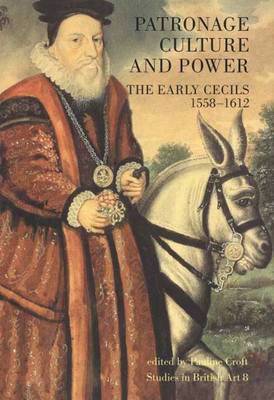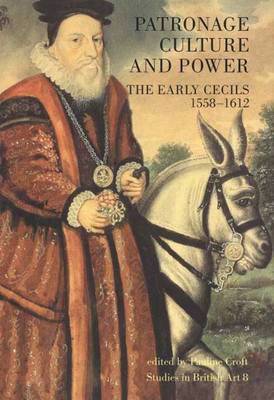
En raison d'une grêve chez bpost, votre commande pourrait être retardée. Vous avez besoin d’un livre rapidement ? Nos magasins vous accueillent à bras ouverts !
- Retrait gratuit dans votre magasin Club
- 7.000.000 titres dans notre catalogue
- Payer en toute sécurité
- Toujours un magasin près de chez vous
En raison de la grêve chez bpost, votre commande pourrait être retardée. Vous avez besoin d’un livre rapidement ? Nos magasins vous accueillent à bras ouverts !
- Retrait gratuit dans votre magasin Club
- 7.000.0000 titres dans notre catalogue
- Payer en toute sécurité
- Toujours un magasin près de chez vous
Patronage, Culture and Power, Volume 8
The Early Cecils 1558-1612
62,95 €
+ 125 points
Description
Early generations of England's illustrious Cecil family--particularly William Lord Burghley (1520-1598) and his son Robert Earl of Salisbury (c. 1563-1612)--engaged in an extraordinary range of patronage activities. This fascinating interdisciplinary volume sets the Cecils in their historical context and reveals for the first time the ways in which they used extensive patronage and broad cultural interests to publicize and advance the family's political position during the reigns of Queen Elizabeth and King James I. Drawing on the most recent findings in many fields, the contributors to the volume shine new light on the broad reach of the Cecils' patronage. Their building program was the most spectacular of the sixteenth and early seventeenth centuries, and many examples--including Burghley House and Hatfield House--survive today. The Cecils also pioneered the vogue for collecting paintings; were patrons to writers (including Ben Jonson) and musicians (John Dowland); encouraged new processes of manufacturing; and introduced new styles of Renaissance design into gardens and interiors. For over seven decades, the authors show, the Cecils' pre-eminence as patrons contributed importantly to their success as the dominant noble family at court.
Spécifications
Parties prenantes
- Editeur:
Contenu
- Nombre de pages :
- 320
- Langue:
- Anglais
- Collection :
- Tome:
- n° 8
Caractéristiques
- EAN:
- 9780300091366
- Date de parution :
- 08-02-02
- Format:
- Livre relié
- Format numérique:
- Genaaid
- Dimensions :
- 185 mm x 262 mm
- Poids :
- 1233 g

Les avis
Nous publions uniquement les avis qui respectent les conditions requises. Consultez nos conditions pour les avis.





